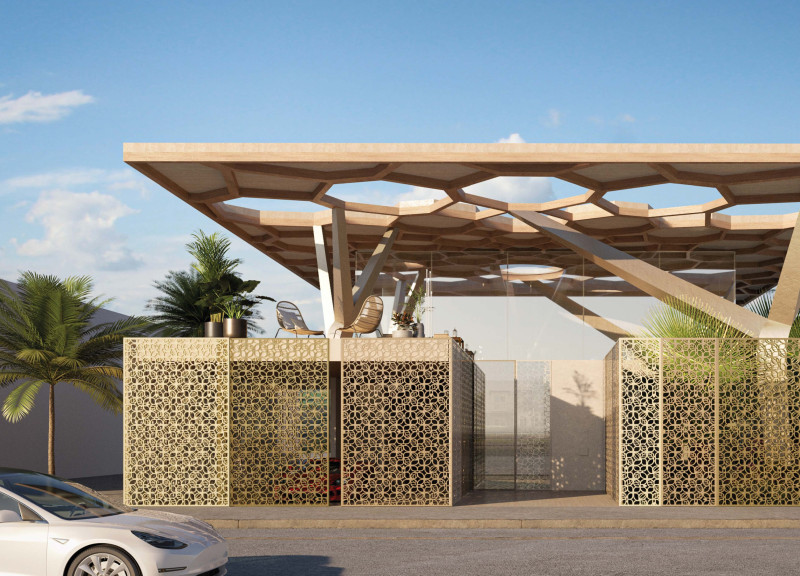5 key facts about this project
The project's primary function is to serve as a community gathering space, designed to foster interaction and collaboration among its users. This functional focus is complemented by an inclusive design approach that prioritizes accessibility and user experience. The layout is indicative of this intention, as it emphasizes open spaces that encourage fluid movement and engagement between different areas. Well-defined zones for activities, such as meetings, social events, and educational workshops, are seamlessly integrated to enhance the overall usability of the space.
A notable feature of the project is its materiality, where the careful selection of materials plays a crucial role in defining both the exterior and interior spaces. The project employs a combination of locally sourced stone, recycled metal, and sustainably harvested timber, reflecting a commitment to environmental responsibility. These materials are thoughtfully chosen not only for their aesthetic qualities but also for their durability and ability to weather beautifully over time. The use of large glass panels invites natural light into the interior, creating a warm and inviting atmosphere. This emphasis on transparency also blurs the lines between inside and outside, reinforcing a connection to the natural landscape that surrounds the building.
The design approach utilized in this project incorporates passive design strategies that enhance energy efficiency and environmental performance. The orientation and placement of windows optimize natural ventilation and daylighting, reducing reliance on artificial lighting and climate control systems. Additionally, green roofing elements are integrated into the design, allowing for stormwater management while also providing an ecological habitat that elevates the project's sustainability aspect.
Another unique characteristic of this architectural endeavor is its responsiveness to the cultural context. The design reflects an understanding of local traditions, which is evident in the incorporation of communal spaces that echo the region's historical social practices. The project not only serves its functional purpose but also acts as a catalyst for community engagement, encouraging residents and visitors to partake in shared experiences.
The aesthetic approach is contemporary yet rooted in the principles of contextualism, where the architecture complements the existing landscape rather than dominating it. The careful consideration of scale, proportion, and materiality results in a design that feels at once modern and timeless. By weaving together various architectural ideas and local influences, the project creates a distinctive identity that resonates within the community.
As an example of thoughtful architecture, this project highlights the importance of collaboration between the built environment and its occupants. The balance struck between aesthetic appeal, functionality, and sustainability is a testament to the design's comprehensive approach. For those interested in exploring further, examining the architectural plans, sections, designs, and ideas behind this project can provide valuable insight into the design processes and considerations that underlie its execution. Engaging with these elements allows for a deeper appreciation of how careful design principles can shape effective and meaningful architectural outcomes.


























